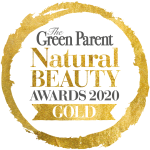When reading about gut health, you may have come across the term ‘biofilm’ – the mysterious underworld of the gut microbiome. At Chuckling Goat, we find biofilms fascinating! We see evidence of them in our microbiome test results so we know the importance of addressing them.
Biofilms are present in nature in many forms: they’re found in deserts, oceans, glaciers, and rainforests, for example, the slime covering rocks, or soil bacteria sticking to plant roots. 1https://kids.frontiersin.org/articles/10.3389/
Biofilms can be good or bad, depending on where they are and which microbes are present. The wrong species in the wrong place can be problematic so let’s delve a bit deeper and find out what they are and what you can do about them.
Biofilms in the gut – a case of safety in numbers!
Before we look at biofilms in the gut, we need to mention the mucus layer which protects the delicate lining of the GI tract. This mucus barrier provides a home for beneficial bacteria and a line of defense to keep unwanted visitors from escaping into the bloodstream. 2https://www.sciencedirect.com/science/article/pii/S2468451121000167
Gut bacteria in the large intestine live in clusters either floating in the hollow digestive tract or attached to this mucus layer (as a biofilm).3https://www.sciencedirect.com/topics/materials-science/biofilms Think of gut biofilms as a sticky layer of slime (made from sugars, proteins and DNA) that binds the bacteria together and to the surface. 4https://quadram.ac.uk/targets/biofilms/ This clever construction enables bacteria to live as a community, sharing food and resources. 5https://www.sciencedirect.com/topics/materials-science/biofilms
As I mentioned, biofilms can be made up of good bacteria such as Bifidobacterium and Lactobacillus which are hugely beneficial – helping with digestion and the absorption of nutrients. Importantly, they help to prevent the growth of harmful bacteria by competing for food and space.
The creation of biofilms not only helps microbes survive better in their environment but also as a ‘favour’ to nature: a symbiotic relationship between bacteria and the host they’re attached to.
However, it’s not always a match made in heaven! Problems arise when they crop up in places that cause harm to the host environment, for example, plaque on teeth, stubborn wound infections, or pathogenic biofilms in the gut that can cause illness and disease.6https://www.sciencedirect.com/topics/materials-science/biofilms
Biofilms provide bacteria with a hiding place from the host’s (that’s you) immune system and antibiotics.7https://www.ncbi.nlm.nih.gov/pmc/articles/PMC7167820/ This is why they can be very difficult to get rid of!
How does pathogenic biofilm affect the gut and the body?
Pathogenic bacteria such as Escherichia-shigella, Pseudomonas, Eggerthella, Fusobacteria, and Citrobacter can enter your body from a variety of sources: food poisoning, dental or urinary tract infections, or wounds. After the acute phase of the infection has passed, residual bacteria can migrate to the gut and hide in a layer of biofilm, resulting in chronic infection.
Pathogenic gut biofilms are linked to various gastrointestinal diseases, such as inflammatory bowel disease (IBD), irritable bowel syndrome (IBS), and colorectal cancer. These biofilms can cause inflammation, disrupt the normal function of the intestinal lining, and interfere with nutrient absorption. 8https://www.ncbi.nlm.nih.gov/pmc/articles/PMC7167820/ 9https://pubmed.ncbi.nlm.nih.gov/33692800/
How can you help prevent the formation of ‘bad’ biofilms?
A healthy and diverse microbiome is more resilient and capable of keeping unwanted microbes at bay. The idea is to inhibit the growth of pathogenic bacteria by crowding them out with plenty of good bacteria (Lactobacillus, Bifidobacterium, Faecalibacteerium etc). Replenishing the gut with an abundance of beneficial bacteria also helps to maintain the thick protective mucus layer along the GI tract.
First and foremost, you need a daily dose of synbiotics – the powerful combination of probiotics and prebiotics! Other ways to support your good gut bugs and help prevent the formation of harmful biofilms include:
- Eating fermented foods each day: kefir, kimchi, sauerkraut, miso, tempeh, and probiotic yoghurt. Kefir contains numerous strains of Lactobacillus which produce lactic acid – a substance that inhibits the growth of pathogenic bacteria.
- Reduce intake of sugar and processed foods – these can damage the gut lining and encourage the growth of pathogenic bacteria.
- Eat a diverse range of fibre-rich plant foods (pulses, legumes, nuts, seeds, whole grains, fruits, vegetables, herbs and spices). Prebiotic fibres provide the fuel for beneficial bacteria to thrive.
- Include as many different colours as possible: plant nutrients such as polyphenols also help to encourage the growth of good bacteria.
- Take collagen which has been shown to support a healthy gut lining.
- Look after your teeth and general oral hygiene – your mouth can be a source of harmful bacteria.
- Keep hydrated – drink at least 1.5 litres of fluids each day.
For more articles on how to support a healthy gut, look here.
If you’d like to find out more about the health of your gut, consider getting a microbiome test. This will give us an evidence base from which to work. Once we have your results in hand, we can make more specific suggestions about how to resolve any biofilm pathogens as well as issues with probiotics and fibre metabolism.
Questions? Feel free to contact us on live chat (weekdays from 8am to 8pm) to speak to one of our nutritional therapists.
References
- 1
- 2
- 3
- 4
- 5
- 6
- 7
- 8
- 9















